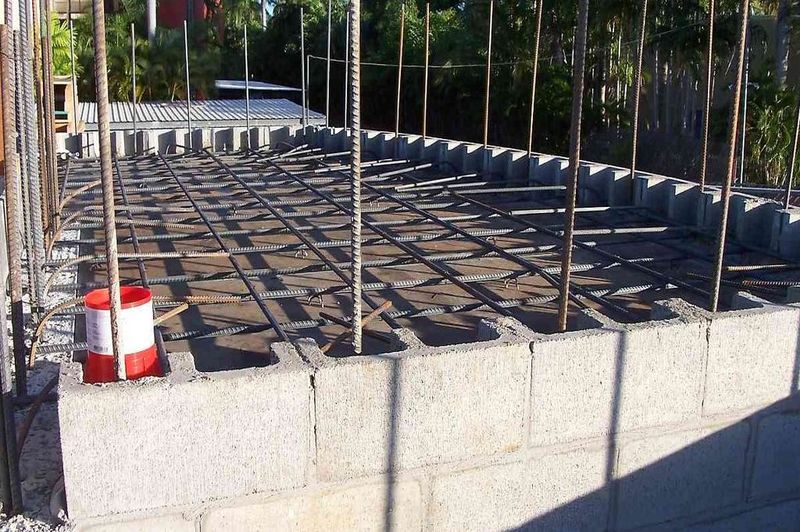Cleaning is an essential step in how to repair a water damaged concrete slab. This article will tackle the steps in fixing the water-damaged concrete slab and explain how it happens.
Whether your questions about water damage on concrete slab revolves on how they acquire water damage or how to check them for water damage, we’ve got you covered. So, read until the end!

How Do Concrete Slabs Get Water Damaged?
Concrete is durable. However, it is also porous. Although it is not as absorbent as wood, it can still “absorb” water.
When water enters your concrete slab, it can lead to cracks. Then, cracks can result in more moisture seeping through your concrete.
As water keeps creeping into your slabs, it may be absorbed by the soil beneath your concrete. This could lead to your foundation becoming affected, resulting in structural failure.
This is why it is crucial to watch out for possible causes of water damage on your concrete. Three of the typical causes of water damage are broken pipe underneath the foundation, rising water table, and excess groundwater.
Otherwise, you’ll have to deal with mold growth, a saturation of building materials, and your flooring’s loss of adhesion.
How to check your concrete slab for water damage
Water damage is difficult to detect, mainly when they occur underneath. This is why we recommend you to go to a professional and have them do hydrostatic testing on your concrete.
Hydrostatic testing can help detect plumbing leaks. However, this can only be done by professionals. You can, however, watch out for signs of water damage in your home.
If your water bill has been increasing or suddenly increased, you may have a plumbing leak causing that. Especially since leaks underneath the concrete can increase about 25% to 50% of your monthly water bill.
Another thing to watch out for is mold growth. If your concrete has been exposed and has absorbed excessive moisture, chances are mold and mildew will grow.
The growth of mold and mildew can even lead to carpet rot. Lastly, water damage can lead to your home being invaded by termites and ants. If you see these things, it is better to take the safe route and contact a professional.
Steps In Repairing Water Damaged Concrete Slab
Step #1. Assess the water damage
Like with any water-damaged structure, the first step you need to do is assess the extent of water damage. By doing so, you’ll be able to decide whether to fix the problem by yourself or if you need to hire a professional.
Also, you need to document the damage. This is to help you and your lawyer support your insurance claim. It would also be ideal for you to contact your insurance company at this time and ask about the policies of your insurance coverage.
Step #2. Clean the surface
Remove the surface water and clean the debris on the surface if there is any. If water stains are present, go for concrete cleansers because soap and water may not cut it.
There are different concrete cleaners for different kinds of stains. For mold and mildew stains, RMR-86 Instant Stain Remover spray works best. It’s a specialty concrete cleanser that works for the mentioned stain issue.
For heavy-duty stains, then Zep Powdered Concrete Cleaner would work best. This is the go-to concrete cleaner for tough stains. Also, it’s easy to apply.
When choosing your concrete cleaner, ensure that you know what type of stain you’re trying to remove so you can buy the appropriate cleaner for it.
Step #3. Determine areas of repair
After assessing the damage and cleaning, you should have a clear idea of which parts of your concrete need repairing. Pay close attention to areas where there was water pooling because they are likely to scale, resulting in deep cracks and buckling. After determining areas of repair, rid the surface of dirt or debris.
Step #4. Minor damage
If the concrete has minor surface damage, you can resurface it by applying a thin coat of concrete on the surface. For small cracks and holes, fill them in with concrete patching material. Even if you see no further damage, we still suggest that you contact a professional to look into your concrete slab’s water damage.
Tips on how to protect your concrete slab
Repairing minor damages to concrete may be easy. However, they still incur costs and damage your home’s structures. Considering this, we thought it would be helpful for you to know these simple tips to protect your concrete slab.
Seal
As mentioned earlier, concrete is porous. Hence, it must have a protective sealant to help it resist any stain and repel moisture.
Clean
You have to clean the stains that come in contact with your concrete as soon as they happen. Leaving them longer would only damage your concrete, and we don’t want that.
Conclusion
Concrete is durable in many ways, but it can still be vulnerable to water damage. This is why we ran you through the whole process, from how it acquires water damage to preventing future water damage. Ultimately, we hope this article about how to repair a water damaged concrete slab was of help to you!
